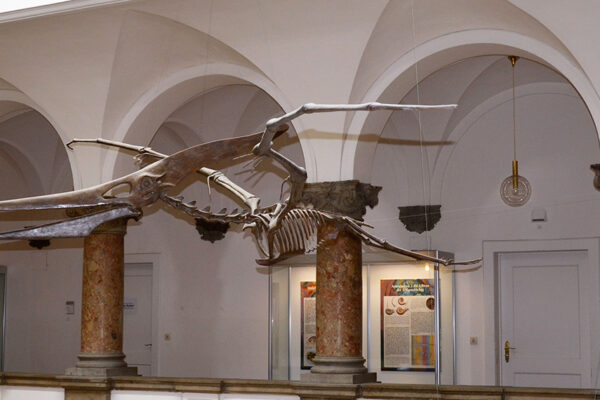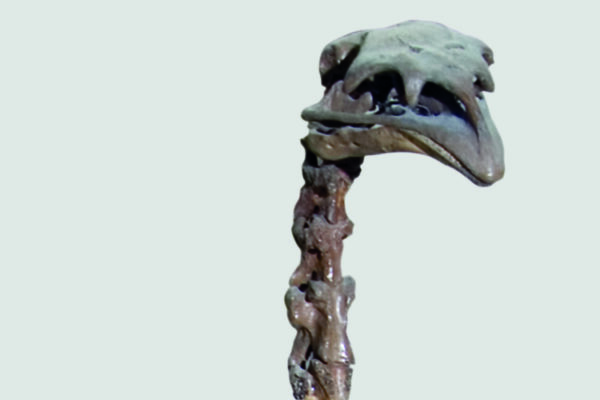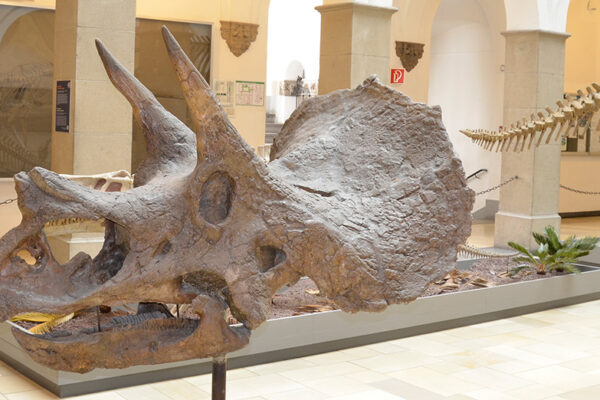Unicorn-Dinosaur
Centrosaurus apertus

Dinosaur Park-Formation, Late Cretaceous: Campanium, approx. 75 Mio. years old
Dinosaur Provincial Park, Alberta, Canada
The horned dinosaurs (Ceratopsia) evolved rapidly, especially in North America during the Late Cretaceous, where they were one of the most important groups of herbivorous dinosaurs. These secondarily quadrupedal dinosaurs split into numerous species, which can be distinguished mainly by differences in the number and arrangement of horns and by details of the distinctive bone ruff at the posterior margin of the skull. Findings of mass assemblages of Centrosaurus indicate that these animals probably roamed the vast river plains of North America in large herds.
SNSB-BSPG 1963 XXVIII 1
Cast in found position






